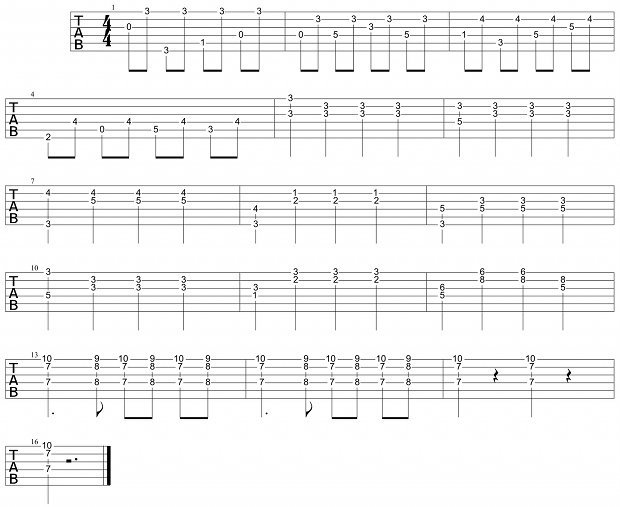Bent Out of Shape: Learning Mozart's Symphony No. 25 in G Minor, Part 2

Welcome to Part 2 of "Learning Mozart's 25th Symphony in G Minor" (Check out Part 1 here).
Hopefully, the first part didn't cause too much trouble.
This new section highlights something I mentioned in the first lesson. It took some time for me to arrange this for the guitar because there are many layers of violins playing individual notes.
To play a single layer would result in a loss of dynamics and important harmony. Therefore, I decided to combine as many of the parts as I could. I will admit I had to move a few notes up or down an octave to make all the layers fit, but I am happy with the results.
Just a reminder: The correct tempo of this piece is around 160 bpm, but feel free to take it as fast as you want!
Part 2 has nothing particularly challenging in terms of speed, but some of the chord shapes might be tricky. You'll need dexterity to change shape accurately at the correct tempo. Part 2 starts with the same theme at the beginning of Part 1. In fact, every section in Part 2 follows a theme based around the same notes (G - D - Eb - F#) but played a different way each time.
The first time is similar to the beginning of Part 1, but this time we have a moving bass line, usually played on a cello. When combined into a single arrangement for the guitar, you create a pedal tone where the high voice pedal is the root note while the low bass outlines an arpeggio. The main challenge of this section is skipping strings between the high pedal tone and the moving bass.
As with everything, begin slow and gradually increase the speed. I prefer to play this section entirely with a pick, but you might find it easier to pick the low notes and use your picking-hand second finger to play the high notes.
Following this, you repeat the same theme but played with thirds. This is pretty simple, and for this section I would advise you to play everything with your pick and second finger (hybrid picking). Everything in this section is played two notes at a time. I find this technique sounds much better than playing both notes with a single pick stroke. If this confuses you, watch the video I made to highlight this technique. For the wide intervals at the beginning of each bar, you must use this technique regardless.
This section ends with a tricky alternation between two chords, which at the correct speed (160 bpm), can be difficult. The key is to play each chord with the correct fingering. You should treat this section like any other scale exercise and practice slowly to a metronome.
Once you've mastered Part 2, try combining with Part 1 and playing both together. Good luck!

Will Wallner is a guitarist from England who now lives in Los Angeles. He recently signed a solo deal with Polish record label Metal Mind Productions for the release of his debut album, which features influential musicians from hard rock and heavy metal. He also is the lead guitarist for White Wizzard (Earache Records) and toured Japan, the US and Canada in 2012. Follow Will on Facebook and Twitter.
Get The Pick Newsletter
All the latest guitar news, interviews, lessons, reviews, deals and more, direct to your inbox!
“There are so many sounds to be discovered when you get away from using a pick”: Jared James Nichols shows you how to add “snap, crackle and pop” to your playing with banjo rolls and string snaps
Don't let chord inversions bamboozle you. It's simply the case of shuffling the notes around







![Joe Bonamassa [left] wears a deep blue suit and polka-dotted shirt and plays his green refin Strat; the late Irish blues legend Rory Gallagher [right] screams and inflicts some punishment on his heavily worn number one Stratocaster.](https://cdn.mos.cms.futurecdn.net/cw28h7UBcTVfTLs7p7eiLe.jpg)


